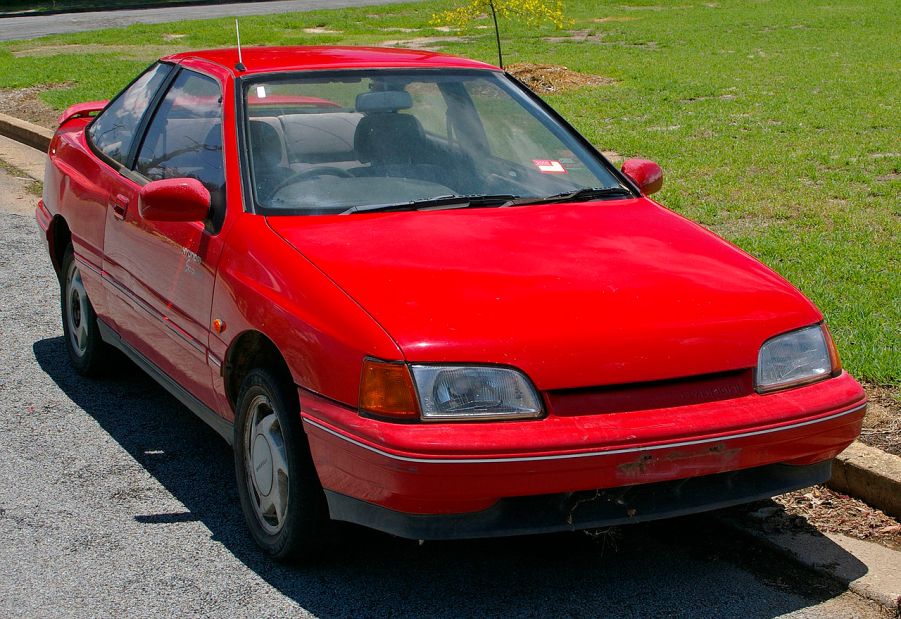
5 Terrible Compact Coupes From The Early 90s
To some, the 1990s might seem like the distant past, while to others, it seems like it was just yesterday. In the automotive world, the 1990s were ancient in terms of the features available and horsepower ratings. This was a time when air conditioning was an option and most cars didn’t come with anti-lock brakes or airbags.
While we sometimes like to be nostalgic and look back at some of the cool Japanese cars from the 90s, we also like to look back and remember the weird ones. Taking a page from an old Motor Week episode, we thought it would be fun to highlight five compact coupes that were considered “sporty” back then, but in reality weren’t that great, which is mostly why they were all discontinued.
Toyota Paseo
The Toyota Paseo was introduced in 1992 as a sporty version of the Toyota Tercel and the replacement for the Corolla coupe. Although it’s coupe-like silhouette did exhibit a sporty form factor, it’s rounded edges and plain door panels didn’t do much to attract the masses. And if any, it was mostly women as the Paseo was always known for being “cute.”
On the inside, the Paseo shared the same interior as the Tercel. The main highlights were the door-mounted seatbelts, a folding rear seat, and not much else as airbags weren’t even an option. Under the Paseo’s hood was a 1.5-liter, four-cylinder engine that produced a whopping 100 horsepower and was mated to a five-speed manual transmission. This combination was good for a 0-60 time of 8.9 seconds, which is surprising considering it was quicker than some hybrid cars today.

Geo Storm
The Geo Storm was technically an Isuzu product in Japan, but when it was sold here in the U.S. from 1990 to 1993, it was produced under General Motors. Its three-door hatchback shape was somewhat functional but intended to be more sporty if anything.
Under the hood was a 1.6-liter engine that produced 95 horsepower through the front wheels via a five-speed manual or four-speed automatic transmission. This combination propelled the car to 60 mph in 9.4 seconds, which means it was slow and definitely not sporty.

Nissan NX1600
The Nissan NX was produced for a very short amount of time in the U.S., from 1991 to 1993. This little two-door coupe was the replacement to the Pulsar and provided a sportier experience with its T-top roof and digital dash display.
The 1.6-liter, four-cylinder engine under the hood produced 110 horsepower and was mated to either a four-speed automatic or five-speed manual transmission. With this powertrain, the NX1600 was able to get to 60 mph in 9.2 seconds. For more power, a Nissan NX2000 with a 2.0-liter engine was also available.
Saturn SC Coupe
If you can remember the Saturn brand, then you might remember the SC Coupe. It’s definitely the sportiest looking of the bunch but it’s still made from cheap plastic. That’s right, its outer shell was known to be rust-proof and dent-resistant, thanks to it being made of plastic. Luckily, though, occupants were treated to luxurious leather seats on the inside.
The Saturn Coupe was powered by a 1.9-liter, four-cylinder engine that put out 124 horsepower and combined with a five-speed manual transmission. This combination was good for a 0-60 mph time of a respectable 8.5 seconds.
Hyundai Scoupe
Last, but definitely not least, we have the Hyundai Scoupe. Weird name? Yes, but it’s actually a combination of the words “sporty” and “coupe” as it was the brand’s first attempt at a sports car. The Scoupe was sold in the U.S from 1991 to 1995, only to be later replaced by the Hyundai Tiburon.
Under the hood was a 1.5-liter, four-cylinder engine that produced 81 horsepower and mated to a five-speed manual transmission. If that wasn’t enough power, it was also offered in a turbocharged iteration that put out 115 horsepower. With the weaker engine, the Scoupe was able to get to 60 mph in a very slow 11.9 seconds.

Not too terrible, but still terrible
While it’s easy to say that these cars were terrible by today’s standards, they weren’t all that great back then. Shoddy interior quality, a noisy ride, and an obvious lack of power and safety features are what made these cars sub-par, hence them being discontinued.
While they’re easy to laugh at now, we should probably keep in mind that these are types of cars that paved the way for the sport coupes that we have now. But upon taking a second look at them, we’re glad a lot of those styling cues didn’t stick around.



